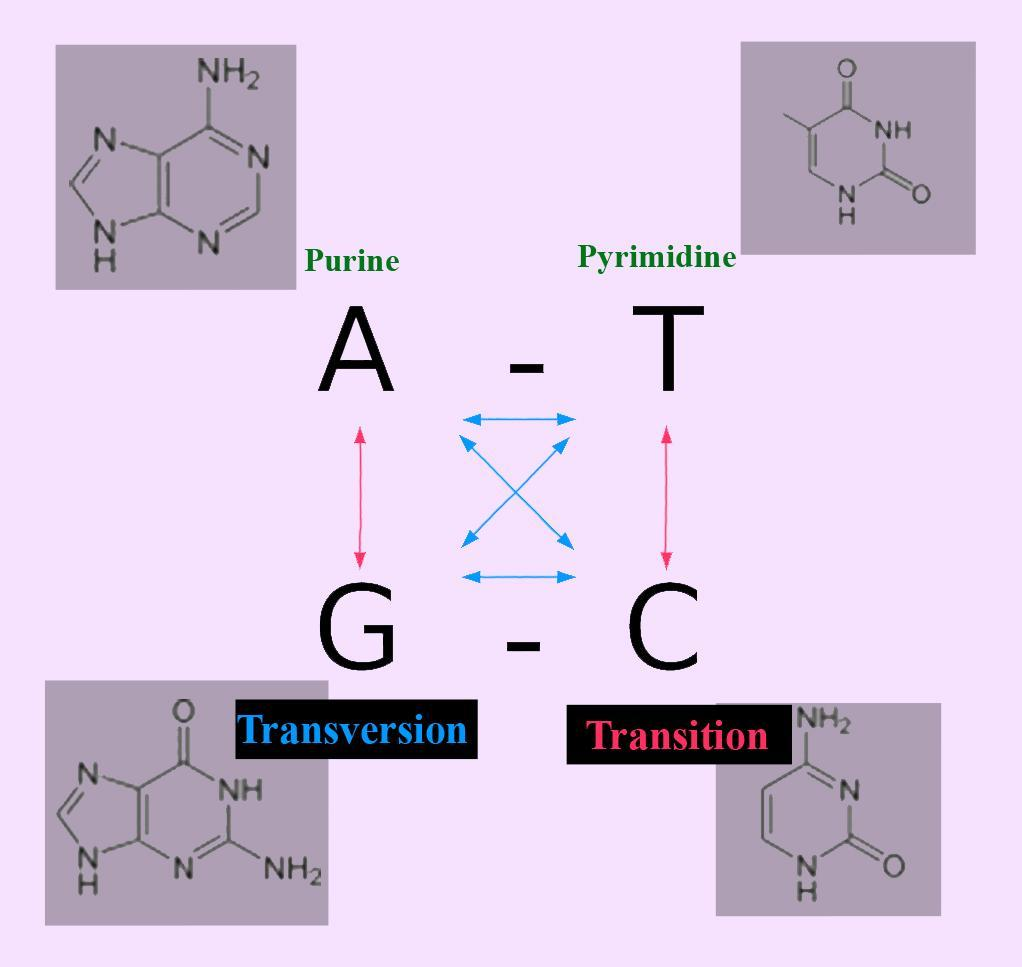
Differentiate between transition and transversion.
Answer
562.5k+ views
Hint: It is a type of base substitution in which a particular nitrogenous base is changed to the other base of the same class. It is another type of base substitution in which a particular base from class converts into a base in the other class.
Complete answer:
Additional information: The transitions emerge essentially more frequently in coding regions because they are more certain than transversions to change the fundamental amino acids that the mutated base codes for, particularly if they seem in the third nucleotide of a codon.

After that, when comparing two genomes, we can use the ratio of transitions to transversions as a test for the presence of coding regions.
Note: Transition and transversion are two types of base substitutions that lead to point mutations. Both are responsible for changing the nitrogenous base of nucleic acid chains. And, both can happen spontaneously or in response to mutagens. A transition is a kind of base substitution that is caused by the conversion of a base to the other base of the same class.
Complete answer:
| Transition | Transversion |
| It is the substitution of a purine from another purine base or pyrimidine from another pyrimidine ($C\longleftrightarrow T$ or $A\longleftrightarrow G$). | A transversion is the substitution of a purine from a pyrimidine or pyrimidine from a purine. |
| Basically, this is the most common type of point mutation. | This is less common than transition. |
| There is one possible transition. | There are two possible transversions. |
| Transition is less likely to cause amino acid sequences. So this remains as a silent mutation | A transversion is more likely to cause amino acid sequence changes. So it pronouncedly affects the subsequent protein. |
| It can be observed, when interchanges of bases within single ring structures or within double-ring structures. | Interchange can happen in a single ring structure with a double ring structure or a double ring structure with a single ring structure. |
Additional information: The transitions emerge essentially more frequently in coding regions because they are more certain than transversions to change the fundamental amino acids that the mutated base codes for, particularly if they seem in the third nucleotide of a codon.

After that, when comparing two genomes, we can use the ratio of transitions to transversions as a test for the presence of coding regions.
Note: Transition and transversion are two types of base substitutions that lead to point mutations. Both are responsible for changing the nitrogenous base of nucleic acid chains. And, both can happen spontaneously or in response to mutagens. A transition is a kind of base substitution that is caused by the conversion of a base to the other base of the same class.
Recently Updated Pages
Why are manures considered better than fertilizers class 11 biology CBSE

Find the coordinates of the midpoint of the line segment class 11 maths CBSE

Distinguish between static friction limiting friction class 11 physics CBSE

The Chairman of the constituent Assembly was A Jawaharlal class 11 social science CBSE

The first National Commission on Labour NCL submitted class 11 social science CBSE

Number of all subshell of n + l 7 is A 4 B 5 C 6 D class 11 chemistry CBSE

Trending doubts
Differentiate between an exothermic and an endothermic class 11 chemistry CBSE

10 examples of friction in our daily life

One Metric ton is equal to kg A 10000 B 1000 C 100 class 11 physics CBSE

Difference Between Prokaryotic Cells and Eukaryotic Cells

1 Quintal is equal to a 110 kg b 10 kg c 100kg d 1000 class 11 physics CBSE

State the laws of reflection of light




